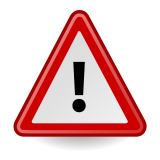Safety Notes: Screwdriver
From WikiEducator
Overview
. Screwdrivers screw screws. Always match the screwdriver to the screw head, both in terms of size and type.Do
- Use a slot screwdriver with a blade tip width that is the same as the width of slotted screw head.
- For cross head screws, use the correct size and type of screwdriver: a Phillips screwdriver may slip out of a screw head designed for use with the slightly, flatter-tipped Pozidriv screwdriver.
- Keep the screwdriver handle clean. A greasy handle could cause an injury or damage from unexpected slippage.
- Shut off electricity before beginning work on electrical equipment (lock out, de-energize and tag out).
- Use a screw-holding screwdriver (with screw-holding clips or magnetic blades) to get screws started in awkward, hard-to-reach areas. Square-tipped screwdrivers (e.g., Robertson) that hold screws with recessed square holes are also useful in such situations.
- Use an offset screwdriver in close quarters where a conventional screwdriver cannot be used.
Don't
- A screwdriver is not a chisel.
- Do not lean or push on a screwdriver with any more force than necessary to keep contact with the screw. A screw properly piloted and fitted will draw itself into the right position when turned. Keep the shank directly over the screw being driven.
- Do not hold the stock in one hand while using the screwdriver with the other. If the screwdriver slips out of the slot, you may cut your hand.
- Do not hammer screws which cannot be turned.
- Do not try to use screwdrivers on screw heads for which they are not designed (e.g., straight blade screwdrivers on Phillips, clutch head, Torx or multi-flutted spline screw heads).
- Do not use a screwdriver for prying, punching, chiseling, scoring, scraping or stirring paint.
- Do not use pliers on the handle of a screwdriver for extra turning power. A wrench should only be used on the square screwdriver shank designed for that purpose.
- Do not use a screwdriver to check if an electrical circuit is live. Use a suitable meter or other circuit testing device.



